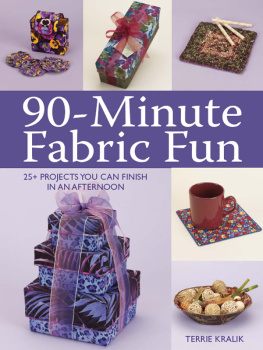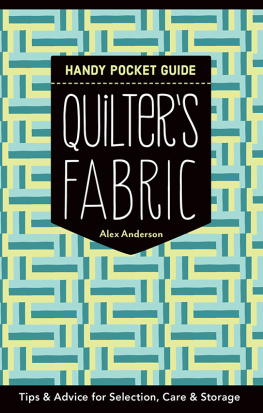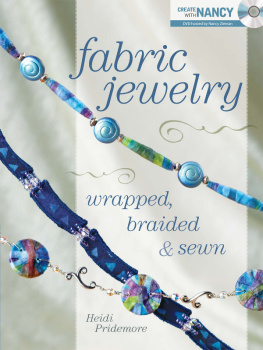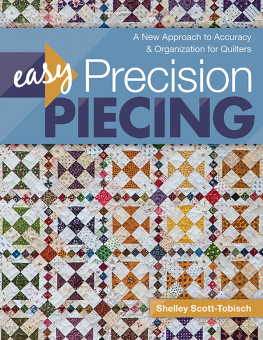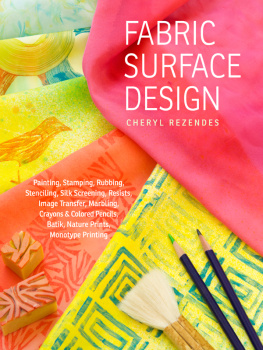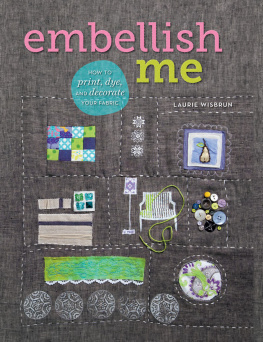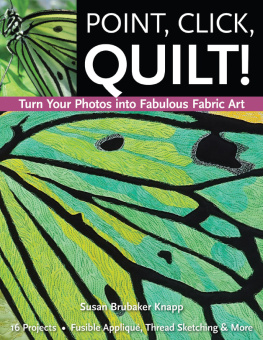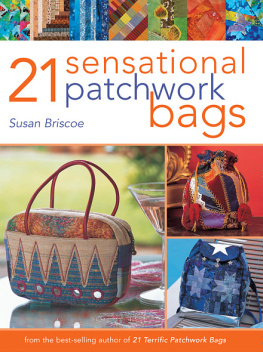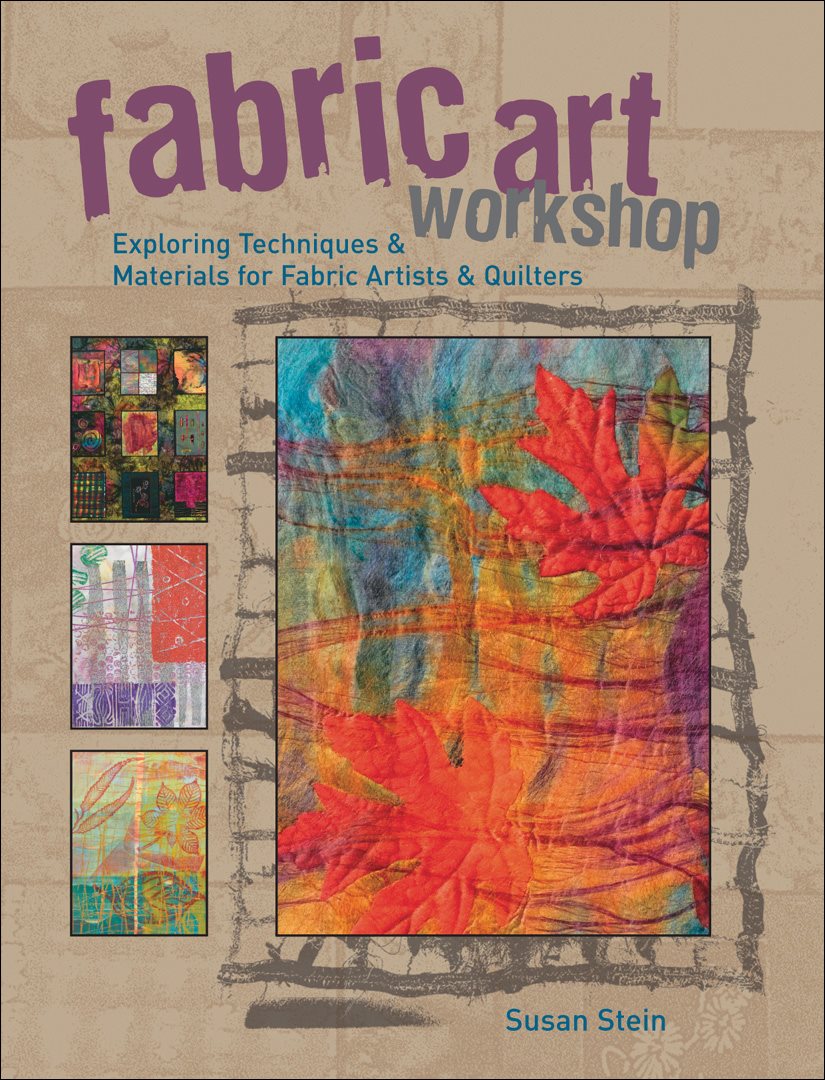
fabric art
workshop
Susan Stein
Exploring techniques and materials for fabric artists and quilters
acknowledgments
Thanks to so many wonderful friendsDiane Bartels, Laura Murray, Mary Johnson, Wendy Richardson, Shelly Stokes, Elizabeth Palmer-Spilker, and Sue Kellywho have opened my eyes to the joys of playing with fabric in new ways; to students who have taught me a lot more than I have taught them; to my husband, John, who encourages me always; and to Linda, Joanne, and Sharon at Creative Publishing international, who have always believed in me.
Artwork Attributions
Autumn Glow; Sampler Quilt
Susan Stein
Minnesota Historical Society, Permanent Collection
Journal Class Sampler
Susan Stein
Copyright 2007
Creative Publishing international, Inc.
18705 Lake Drive East
Chanhassen, Minnesota 55317
1-800-328-3895
www.creativepub.com
All rights reserved.
Printed in China
10 9 8 7 6 5 4 3 2 1
Digital edition: 978-1-61673-345-2
Hardcover edition: 978-1-5892-3328-7
Library of Congress Cataloging-in-Publication Data
Stein, Susan.
Fabric art workshop : exploring the latest techniques and materials /
Susan Stein.
p. cm.
Includes index.
ISBN-13: 978-1-58923-328-7 (soft cover)
ISBN-10: 1-58923-328-X (soft cover)
1. Altered books. 2. Fabric pictures. 3. Textile fabrics. I. Title.
TT896.3.S78 2007
702.81--dc22
2007007251
President/CEO: Ken Fund
Vice President/Sales & Marketing: Peter Ackroyd
Publisher: Winnie Prentiss
Executive Managing Editor: Barbara Harold
Acquisition Editors: Linda Neubauer, Deborah Cannarella
Development Editor: Sharon Boerbon Hanson
Production Managers: Laura Hokkanen, Linda Halls
Creative Director: Michele Lanci-Altomare
Senior Design Manager: Brad Springer
Design Managers: Jon Simpson, Mary Rohl
Director of Photography: Tim Himsel
Lead Photographer: Steve Galvin
Photo Coordinators: Joanne Wawra, Julie Caruso
Book Design: Tina R. Johnson
Cover Design: Jon Simpson
Page Layout: Tina R. Johnson
Photographer: Andrea Rugg
FABRIC ART WORKSHOP
by Susan Stein
Permission to reproduce the printed images from Carol Belanger Grafton, ed., Authentic Chinese Cut-Paper Designs, Dover Design Library (New York: Dover Publications, Inc., 1988), used in Printout to Fabric Transfer, granted by Dover Publications, Inc.
Due to differing conditions, materials, and skill levels, the publisher and various manufacturers disclaim any liability for unsatisfactory results or injury due to improper use of tools, materials, or information in this publication.
All rights reserved. No part of this work covered by the copyrights hereon may be reproduced or used in any form or by any meansgraphic, electronic, or mechanical, including photocopying, recording, taping of information on storage and retrieval systemswithout the written permission of the publisher.
table of contents
i can do that with this?
With busy lives and lots of distractions, taking a little time out to play, to create, to find out what if is important.
These small and portable projects make catching some creative time easy. Designed as journal pages, they are fun to do at group get-togethers and with kids. They also require very little equipment.
The idea for making fabric journal pages began during a Quilt Market in Houston. Among all the gorgeous quilts, wall hangings, and garments were small pieces that chronicled peoples lives throughout a year. Some included writing and poetry, but typically the page alone conveyed a message. It was an arresting exhibit because it was so unusual and personal. Inspired, I began to teach a journal class to explore innovative techniques for, with, and on fabric. I encouraged students to pick a theme that held meaning for them, both to express themselves and to contribute unity to their collection of pages. Youll see a haiku journal, a dragonfly-dusted wall hanging, and autumn-as-inspiration pieces in the Artists Gallery at the back of the book.
Who knew we would paint fusible web, make beads from fabric, and take worms out of cocoons? But new ideas pop up constantly and the only thing stopping fiber artists from trying something is the desire to do it all right now!
Fabric Art Workshop takes you through 27 techniques that use paint, fiber, embellishments, and even copy machines to make personal pages. These can then be used for wall hangings, fabric books, matted pieces, screens large and small, boxes, and anything else your imagination can devise. You may find yourself inspired to create larger pieces that combine several of the techniques, or perhaps youll apply the artful approaches to enhance garments.
In preparation for making the projects, collect the best paints and fabrics you can find. Prepared-for-dyeing (PFD) fabric is ideal for any painting technique; it has no sizing or finish to interfere with good paint absorption. You will find PFD fabrics at fine quilt shops. For all of the projects, you will want to start with pieces of fabric cut at least 9 11 (22.9 29.2 cm) so you have a little insurance while working or for seam allowances. After you complete a piece, you can trim it to the finished book size, 8 11 (21.6 27.9 cm), unless you plan to mat it or sew it onto another piece of fabric.
I used paints by Jacquard for many of the methods in Fabric Art Workshop. They layer well and offer a range of possibilities: Dye-na-Flow, a thin transparent paint, behaves almost like a dye; Textile Colors, a medium-bodied paint, also gives transparent coverage; Neopaque colors are opaque; and Lumiere colors are metallic. Embellishments I found everywhereeven at the hardware store!
The makers of some of the products used with certain techniques never intended (or imagined) such uses, so be prepared for unexpected results! Many techniques should be tried a couple of times before using them to make a final project piece. Write notes with a permanent marker on the edges of practice pieces to record what you did. Turn a mistake into a happy accident whenever you can.
Keep a file of test samples (and articles and resources) so you can easily find them when you want them. Be mindful of safety precautions when using products like bleach or when melting synthetic materials; work outside when possible or work in a vented room. Most of all, cultivate a playful attitude and be ready for the question
Next page

